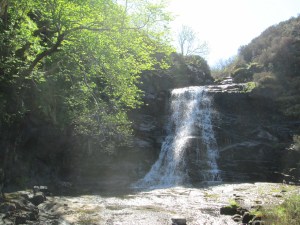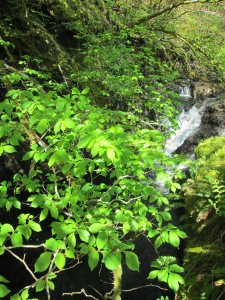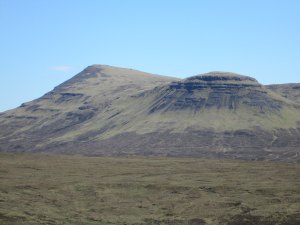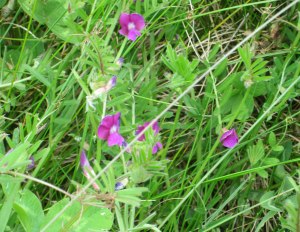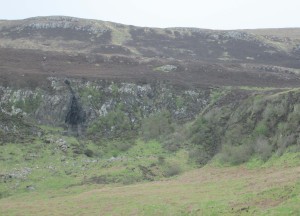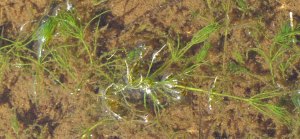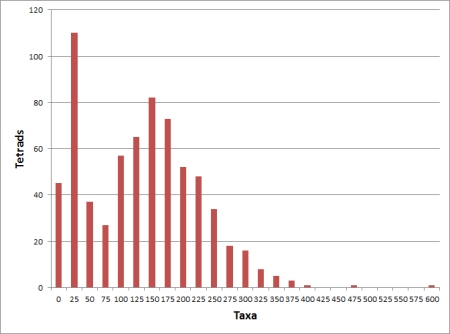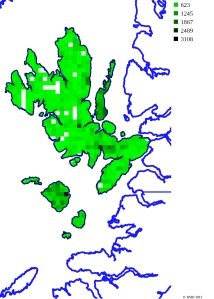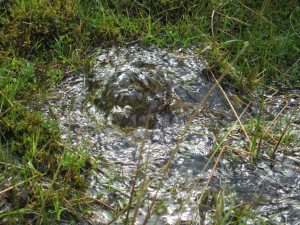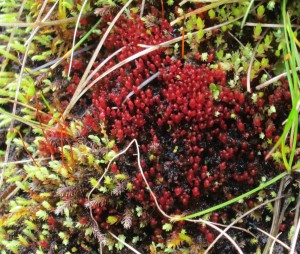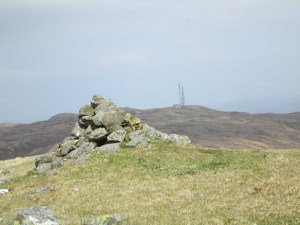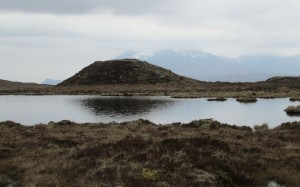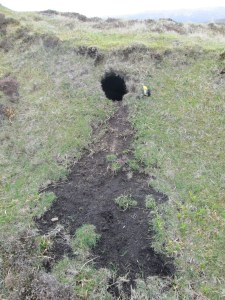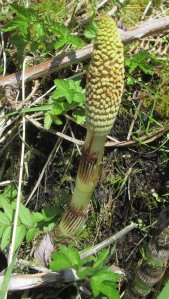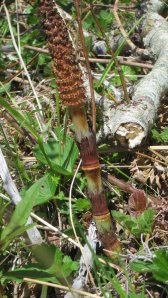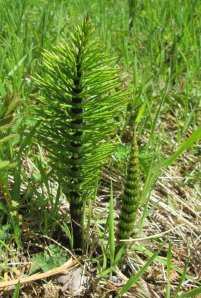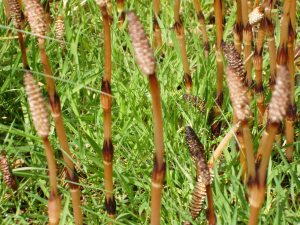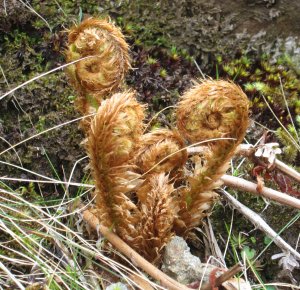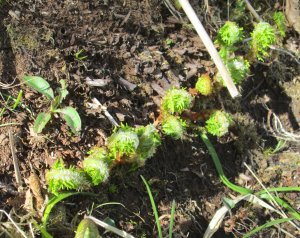An interesting day starting along the River Haultin in a tetrad with five species recorded previously. Sadly I failed to find the most interesting ones: Anagallis tenella (Bog Pimpernel) and Lycopodium clavatum (Stag’s-horn Clubmoss). However, there was plenty of rich ground and, unusually in this part of the world, a few of the Orchis mascula (Early-purple Orchid) had spotted leaves:
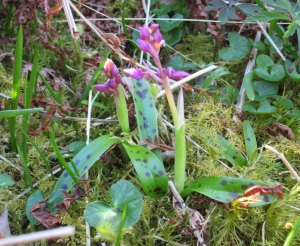
Spotty Orchis mascula
There were certainly plenty of these orchids especially on the side of the Lòn Ach ‘an Reithean:
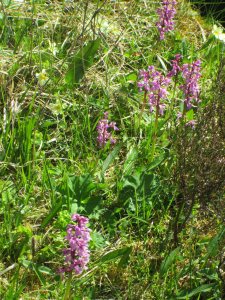
Orchis en masse(cula)
The Trollius europaeus (Globeflower) was nearly in flower:
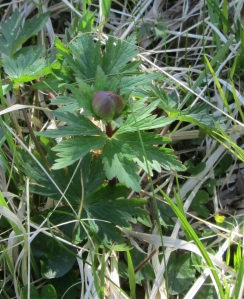
Globeflower in bud
I moved north to the next tetrad which had one record in the database but on inspection this turned out to be an erroneous grid reference and so should have appeared white on the density map. Interesting species in this tetrad included Alchemilla alpina (Alpine Lady’s-mantle) at 115m, Diphasiastrum alpinum (Alpine Clubmoss) on Beinn an Righ, Equisetum pratense (Shady Horsetail) and Salix purpurea (Purple Willow).
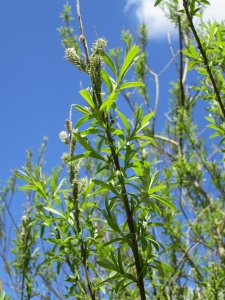
Salix purpurea
I tried to take a photo of the E. pratense because at this early time of the year young E. sylvaticum can look superficially similar – before it forms branches. However, the sheath teeth on the main stem are very different. Sadly, I failed to get an adequate picture to show this.
Moving north again, the next tetrad including part of the River Romesdal had no records at all, not even errors. The Romesdal rises high in the Trotternish Ridge so it was no surprise to find Alchemilla alpina (Alpine Lady’s-mantle), Saxifraga aizoides (Yellow Saxifrage), S. hypnoides (Mossy Saxifrage) and S. stellaris (Starry Saxifrage), though the last of these was in a damp patch well up the hill away from the river as well as by it.
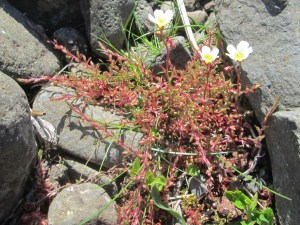
Saxifraga hypnoides
During the day I saw several Green Hairstreak butterflies (Callophrys rubi). This picture is from Raasay some years ago:
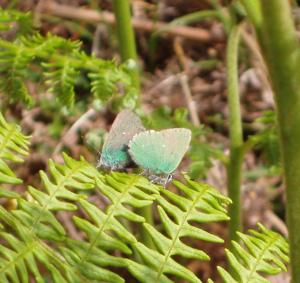
Green Hairstreak
and many Green-veined Whites (Pieris napi). I like the way one folds its wings around its mate:

Green-veined Whites
